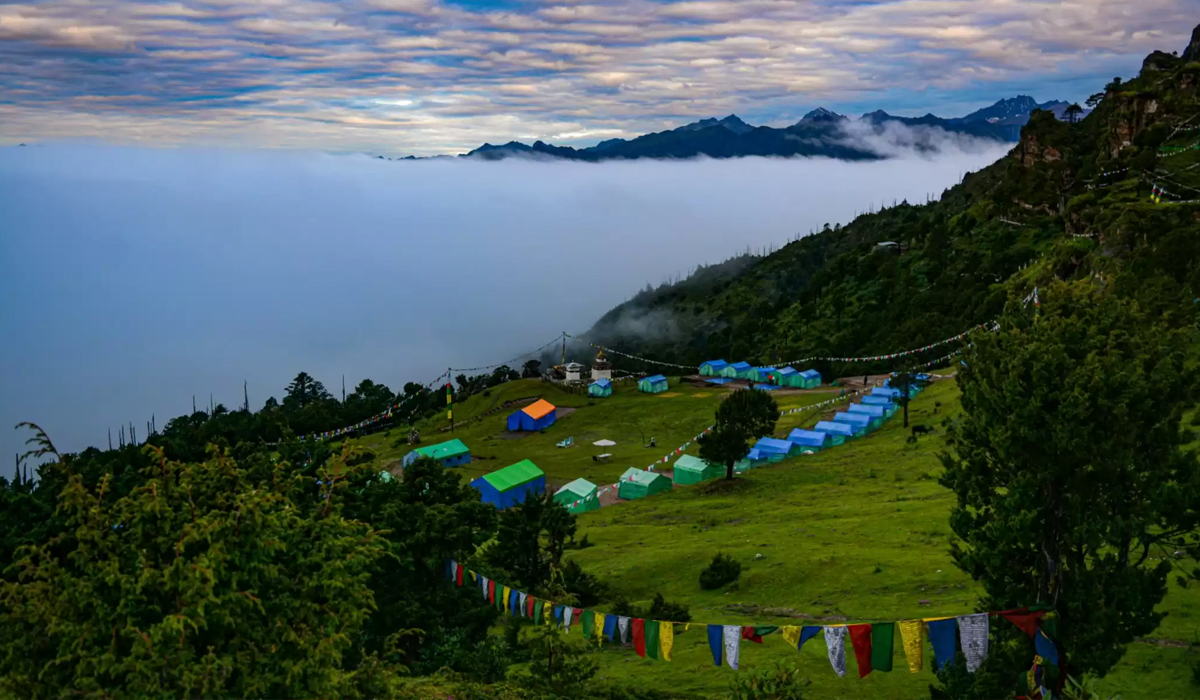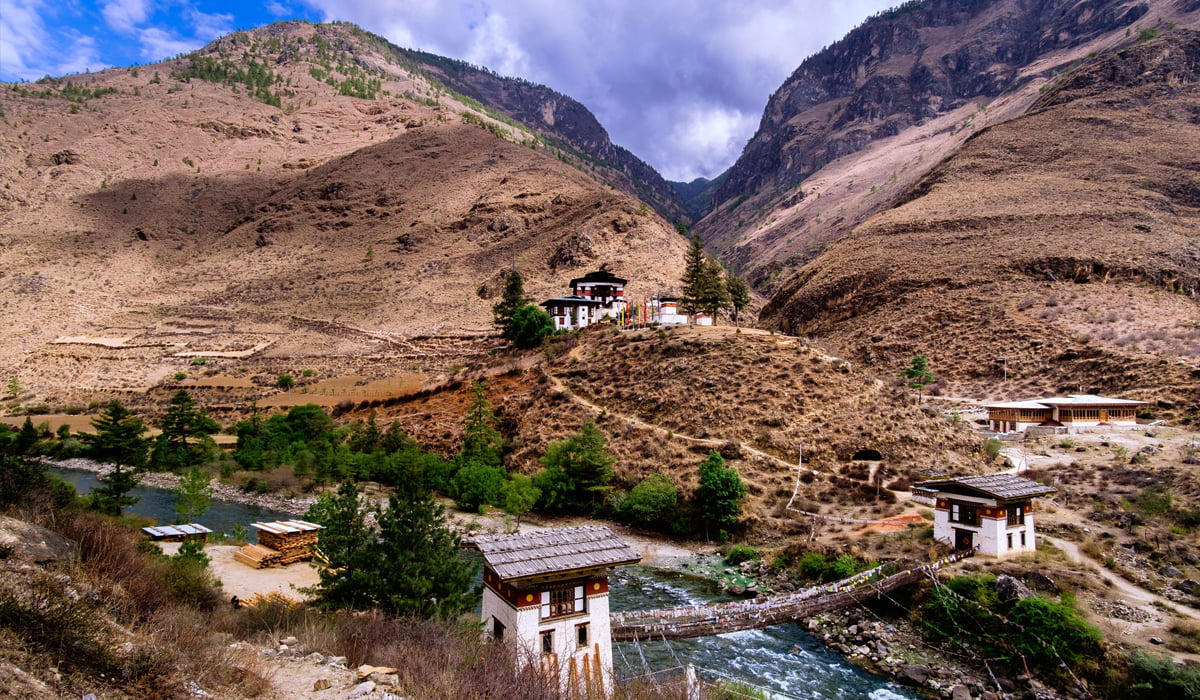


Dzongdrakha Monastery: The Miniature Tiger’s Nest
Dzongdrakha Monastery, often referred to as the “Miniature Tiger’s Nest,” is a serene and spiritually significant site nestled on a rocky cliff in Paro, Bhutan. This cluster of temples is a hidden gem, offering a tranquil alternative to the more famous Taktsang Monastery (Tiger’s Nest).
Historical Background
Dzongdrakha Monastery was established in the 16th century by Lama Ngawang Chogyal, a relative of Zhabdrung Ngawang Namgyal, the unifier of Bhutan. Legend has it that Guru Rinpoche meditated at this site, blessing it as a sacred space. The monastery has since been a place of worship and pilgrimage for Buddhists, revered for its historical and spiritual significance.
Architectural Highlights
Perched on a cliff, the monastery comprises several temples, each adorned with intricate murals and carvings reflecting Bhutanese artistic traditions. The main temple is dedicated to Guru Rinpoche, with smaller temples honoring various deities. The location itself, surrounded by pine forests and perched above the fertile Paro Valley, adds to its ethereal charm.
Spiritual Significance
Dzongdrakha Monastery is an important pilgrimage site for Bhutanese Buddhists. It is believed to offer blessings and spiritual enlightenment to those who visit. The monastery is also associated with the practice of meditation, drawing monks and practitioners seeking peace and insight.
Scenic Beauty
The hike to Dzongdrakha Monastery is relatively easy, taking visitors through picturesque landscapes of terraced fields, pine forests, and charming villages. From the monastery, visitors can enjoy panoramic views of the Paro Valley, making it a perfect spot for reflection and photography.
Accessibility
Located near Bondey village, Dzongdrakha Monastery is about a 30-minute drive from Paro town. The short hike to the monastery is suitable for all ages, making it an ideal destination for families and travelers seeking a peaceful retreat.
Festivals and Community Role
The monastery is an integral part of the local community, hosting annual rituals and ceremonies. These events provide a glimpse into Bhutan’s vibrant cultural and religious heritage, attracting both locals and visitors.
Preservation Efforts
Efforts are underway to preserve Dzongdrakha Monastery’s unique architecture and sacred relics. Local communities and the government collaborate to ensure that the site remains a spiritual haven for generations to come.
Paro - Places to visit

Chelela Ridge Trek offers breathtaking views of the Himalayas, vibrant flora, and a rich cultural experience in Bhutan’s scenic landscapes.

Bumdrak Trek offers stunning views of the Himalayas, serene monasteries, and unique cultural experiences, making it a memorable adventure in Bhutan.

Dzongdrakha Monastery, perched on a cliff in Paro, features stunning architecture and serene surroundings, offering insights into Bhutanese Buddhism.

Paro Taa Dzong, a historic fortress, houses the National Museum of Bhutan, showcasing the country’s rich cultural heritage and art.

Paro Rinpung Dzong, a stunning fortress-monastery, features exquisite Bhutanese architecture and serves as an administrative center and religious site.

Kyichu Lhakhang, one of Bhutan’s oldest temples, symbolizes Buddhism’s introduction, featuring beautiful architecture and serene surroundings in Paro Valley.

Drukgyal Dzong, a historic fortress in Paro, symbolizes Bhutanese resilience, offering breathtaking mountain views and insights into the nation’s heritage.

Tachogang Lhakhang, located in Paro, is a historic temple known for its stunning architecture and beautiful bridge, symbolizing Bhutanese heritage.

Dungtse Lhakhang, a unique chorten-style temple in Paro, features exquisite murals and offers insights into Bhutanese Buddhism and history.

Taktsang Monastery, or Tiger’s Nest, clings to a cliff in Paro, symbolizing Bhutan’s spirituality and breathtaking natural beauty.

Chelela Pass, the highest road pass in Bhutan, offers stunning views, vibrant flowers, and a scenic route to Paro and Haa.
